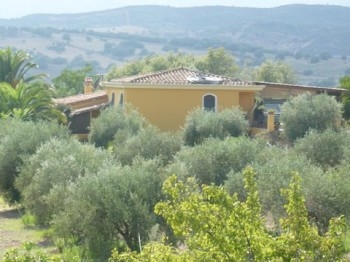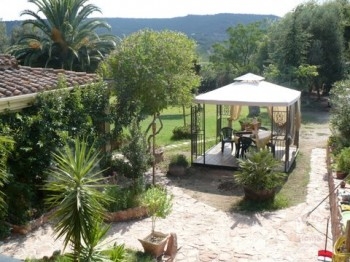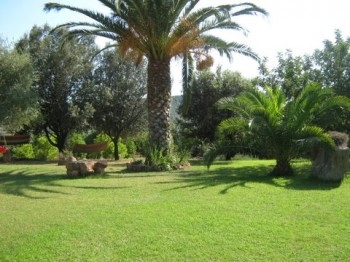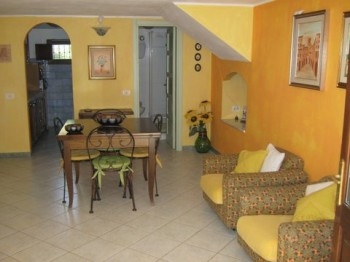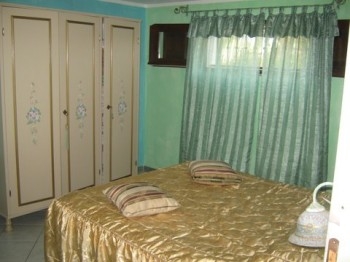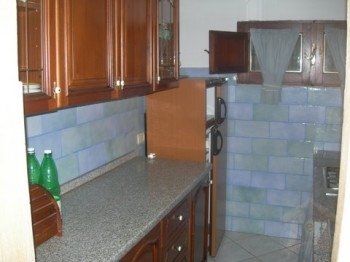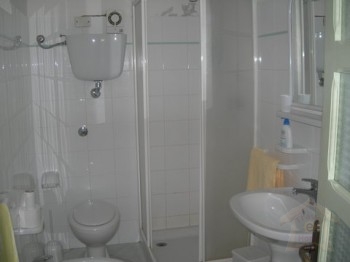Sardinia is constituted by the homonymous island (after Sicily, the second biggest of the Mediterranean), and by numerous minor islands (San Pietro, Sant\'Antioco, Mal di Ventre, Asinara, Isola Piana, Caprera, La Maddalena, Spargi, Budelli, Razzoli, Santa Maria, Tavolara, Molara, Serpentara e Isola dei Cavoli), for a global expansion of 24.090 kilometers square. The population is of over 1,600,000 inhabitants. The regional capital is Cagliari. From 2005 provinces are doubled: from four to eight.
Sardinia, is estimated to be old around 600 millions of years ( it emerged in the Carboniferous: hundreds millions years ago it was in strictly contact with France and Spain, before to carry out a translation with the neighbouring Corse) and boasts a signal stability in its structure: its volcanoes are extincted from millions years. It can\'t be said the same about the hydrological viewpoint, a problem that characterizes as well cities like Cagliari: uncountable are the underground caverns of uncommon sizes.
The caves in the island are among the most beautiful and ancient in Italy and in Europe: it is possible to find some of these in the interior and along the coasts alike ( some are reachable only by sea, and some others are visitable only by rigged and capable speleologists). An other phenomenon that involves particularly Sardinia is the erosion, caused by the natural composition of its rocks and by the strong action conducted by the dominant winds.
Sea, flat, hill or mountain? In Sardinia there is all this, you have only to decide where do you want to go. It is not possible to reach very high altitudes (any mountain reaches the 1900 meters) but there is the possibility to appreciate a chilling fresh even in the midsummer, at least in some areas of the island. We suggest an hike on the mighty top of the Punta la Marmora (1834 meters): from there, when north-westerly, it is possible to contemplate the island from coast to coast getting lost in the tender beauty of the sunrise or of the sunset. Provided that you will be rigged and accompanied by experts.
Punta la Marmora is the highest summit of the mountainous groups of Sardinia (Gennargentu, Supramonte, Limbara, Marghine, Goceano, Serpeddì, Sette Fratelli, Sarrabus). The riliefs of Broncu Spina (1829 meters), Su Sciusciau (1823 meters) and Punta Flores prove to be slightly lower. The morphological structure changes from zone to zone. The most diffuse rocks in Sardinia are the granite, the basalt, the trachyte and the travertines.
The sea is one between the most beautiful in the world, even though it can not extol the coral reef and the multicolored fishes of the exotic countries. But forests and woods, which extension is unfortunately sharply decreased, in regard to some centuries ago, still preserve wonderful surprises as for example natural monuments like the olivaceous of Luras (Gallura: it is more than three thousand years old and it is the most ancient in Europe) or the �fratello� (�brother�) of Santa Maria Navarrese (only thousand years old, the last sample of a forest now a day disappeared in the sea resort of the Ogliastra). Otherwise the evergreen oak of Orgosolo and Seui (Barbagie), or, the yew-tree too, which tempts time in the gully of the Gorroppu (side of Urzulei, in Ogliastra). Authentic treasures of a gentle nature partially uncontaminated, witness to a longeval and proud Sardinia.
You could smell the fragrance of the Mediterranean maquis, during some periods of the year they are particularly strong almost exhilarating. In Sardinia by some international companies have been identified officinal plants, which have a huge importance in the medical and pharmaceutical domain.
In our island you will find many protected parks (marine or in the inside zones), where various animal and vegetable species live, some of these are dying out and for this reason are protected. You couldn\'t miss the visits to some of the most charming caves (of Nettuno, of the Bue Marino, Su Marmuri, of the Fico, Is Zuddas, San Giovanni, Su Mannau, Sa Oche e Su Bentu, Ispinigoli, Is Janas). At last waterfalls, torrents, lakes (they are almostly artificial constructions, but not for this reason less beautiful), and ponds offer one more reason to organize a long walk on the green contemplating the local flora and fauna.

 Property Type :
Apartment
Property Type :
Apartment  2 Bedrooms
2 Bedrooms 1 Bathroom
1 Bathroom  2 to
5 Sleeps
2 to
5 Sleeps 